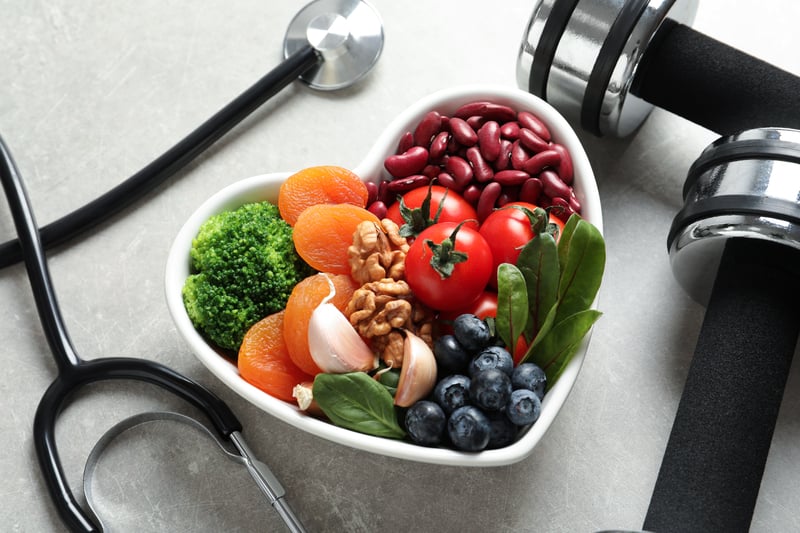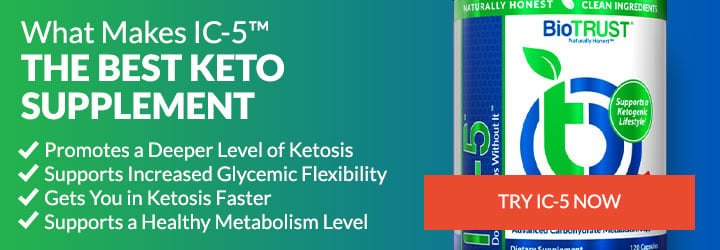What Is the TLC Diet? Here’s a Beginner’s Guide

There are countless diet options available. Some help you drop fat, others increase general health, and yet still others are designed to support longevity, gut health, or brain function. Then there are some diets that aim to improve heart health. That’s exactly what the TLC Diet, or Therapeutic Lifestyle Changes Diet, is designed for. It was created by the National Institutes of Health’s National Cholesterol Education Program. The key goal of the TLC Diet is to cut cholesterol and promote heart-healthy eating.
What is the TLC Diet?
This government-endorsed diet is not about the latest fad to drop weight. It even provides some latitude with what you can eat. That said, there are some pretty strict guidelines. For example, the TLC Diet recommends limiting fat to even lower limits than the general recommendations for health.
The diet starts by coming up with your target calorie level; the general recommendations are, for men, 2,500 calories per day, and for women, 1,800 calories. According to the NIH, “Calories should be limited to just enough to maintain a healthy weight.” If weight loss is also a goal, then the calorie recommendations drop to 1,600 for men and 1,200 for women.
Next, saturated fats are decreased to under 7% of daily calories, with total fat intake making up 25 to 30% of daily calories. In other words, you’ll want to limit high-fat foods, like fatty cuts of meat and full-fat dairy and cream. Dietary cholesterol is also limited to less than 200 mg per day. (That’s about the amount found in two ounces of cheese.)
If LDL cholesterol levels aren’t budging after 6 weeks, 2 grams of plant stanols or sterols (found in vegetables, fruits, whole grains, and some vegetable oils) along with 10 to 25 grams of soluble fiber are also added to the TLC Diet. Both stanols/sterols and soluble fibers help block the absorption of cholesterol in the digestive tract, which helps lower LDL levels.
The calories are divided into three meals plus one snack per day. Skipping meals, especially breakfast, is not recommended. To round out the rest of the macronutrients, the TLC Diet recommendations suggest 50 to 60% of calories come from carbohydrates, with a mere 15% coming from protein.
The TLC Diet also places an emphasis on “how” you eat (i.e., the way you eat). For example, it recommends that you avoid eating dinner or snacking while watching TV, as this can lead to eating too much. It also encourages you to eat slowly, so your brain has time to register fullness levels.
Along with the diet recommendations, the TLC Diet also includes an exercise component of at least 30 minutes of moderate-intensity activity per day (or at least most days). This can be accomplished by walking briskly or choosing your favorite form of exercise (e.g., running, cycling, swimming, dance, etc.).
Finally, the diet also takes a long-term approach to weight management to help people reach and keep their weight goals, since losing extra weight and keeping it off, according to the NIH, is an important way to decrease the risk of high cholesterol, blood pressure, diabetes, heart disease, etc.
What Can You Eat on the TLC Diet?
Like most healthy diets, the foundation of the TLC Diet is nutrient-dense whole foods, like lots of vegetables and legumes (3 to 5 servings per day) and plenty of fruits (2 to 4 servings). It also allows for whole grains (6 or more servings per day of whole-grain breads, pasta, rice, and potatoes), and nonfat or low-fat dairy (2 to 3 servings per day). Eggs (2 or fewer yolks per week) and meat, fish, and poultry (5 or less ounces per day) can be eaten with limitations. You’ll also want to remove the skin from any chicken, turkey, or fish.
Here are the foods to eat on the TLC Diet:
- Vegetables, like broccoli, Brussels sprouts, and carrots
- Fruits, typically fresh fruit rather than fruit juices
- Whole grains from bread, cereal, pasta, oatmeal, and quinoa as well as starchy vegetables like potatoes
- Legumes (i.e., beans and lentils)
- Nuts and seeds—make sure to only eat in moderation and keep fats under 30% of total calories
- Low-fat/nonfat dairy (with no more than 3 grams of fat per ounce)
- Lean cuts of meat, poultry, and fish (skinless)—no more than five ounces per day
- Low-fat plant-based protein sources, like tofu
- Some vegetable oils and margarines (no trans fats), like olive, avocado, and canola oil
- No more than one (for women) to two servings (for men) of alcoholic drinks
Here are the foods to avoid on the TLC Diet:
- Fatty cuts of beef, pork, and lamb
- High-fat, processed meats like bacon, sausage, and hot dogs
- Fried foods, including French fries or fried chicken
- Processed foods, such as potato chips, crackers, and cookies
- Egg yolks (only 2 yolks per week; egg whites are permitted)
- Full-fat dairy products, such as butter, cream, whole milk, and cheese
- Excess sodium (no more than one teaspoon, or 2,300 mg per day)
- Excess added sugar
- Excess alcohol—high-calorie drinks are also not recommended—as alcohol may increase blood pressure and triglycerides
The TLC Diet isn’t easy for everyone to follow. You are required to track your eating to ensure no more than 7% of your total calories are from saturated fats. You’ll also need to track dietary cholesterol intake to ensure you don’t exceed the 200 mg daily limit. So, you’ll want to brush up on reading food labels and use a daily food journal and calculator.
You also won’t find a lot of resources and tools to help you follow the diet other than an 80-page Guide to Lowering Your Cholesterol with TLC—a manual from the U.S. Department of Health and Human Services. While this guide does provide a few meal plans, it doesn’t offer any diet-approved recipes. You can, however, purchase books for more recipe ideas.
While the TLC Diet may not be the easiest to follow, many people may find that they won’t be too hungry on the diet due to the emphasis on eating more whole, minimally processed foods and a higher fiber intake in general. If you enjoy creamy sauces or red meat, however, you may feel deprived. If sweets are what you crave, then you can scratch the itch with low-fat/nonfat frozen yogurt or sorbet.
Will the TLC Diet Help You Drop Fat?
The TLC Diet isn’t a weight-loss diet, per se, but by helping control caloric intake, promoting healthy food choices, and encouraging a physically active lifestyle, it can help you lose weight and keep it off, which can also help with managing cholesterol levels.
According to the NIH, participants can expect a ten-pound weight loss. More importantly, people can lower LDL levels by up to eight percent when following this diet.
In one 2004 study, a TLC-like Diet was compared directly with a low-carb, high-fat diet over a 6-month period. During this time, those following the low-carb, high-fat diet experienced an average weight loss of 31 pounds. Those following a TLC-like Diet, on the other hand, lost just 20 pounds. That being said, 20 pounds is still significant, and for people who are overweight or obese, a loss of just 5 to 10% of their current weight is likely to decrease the risk of diseases, including heart disease.
Issues with the TLC Diet
If you are looking for a diet that promotes heart health, and you’re willing to track calories—especially those from saturated fat and foods that contain cholesterol—as well as the other macronutrients, then this diet may work for you. If you find low-carb diet plans difficult to follow, then the TLC diet may be worth looking into.
That said, many experts suggest that diets that limit fat and cholesterol are outdated. The original diet protocol is from 2005 and much of the research is from the early 2000s. Of course, every year, we are learning more about health and wellness, including how to properly nourish our bodies.
More recent research has found that dietary cholesterol has little, if any, effect on cholesterol levels for most of us (unless you’re hypersensitive). What’s more, saturated fat can raise levels of the good HDL cholesterol, which is beneficial for heart health. Some large review studies have even found that decreasing saturated fat in the diet isn’t tied to a decreased risk of heart disease.
Looking at specific foods, for example, the TLC Diet recommends cutting out egg yolks, yet we now understand from more recent research that much of the nutrition from eggs comes from the yolks, including heart-healthy vitamin D and omega-3 fatty acids. Researchers and nutritionists are also warming up to whole dairy products (i.e., full-fat varieties) over low-fat and skim varieties.
There are many diets that are easier to follow that don’t involve all (or any, for that matter) of the calorie counting, many of which may lead to even greater weight loss. The TLC Diet may not be that friendly for those who are navigating allergens (such as dairy, soy, or gluten). Though you can make some modifications, with the number of restrictions the diet already involves, it may make the diet feel that much more difficult.
Is the TLC Diet Right For You?
If your doctor has prescribed the TLC Diet to help reduce your risk of heart disease by developing healthy eating and exercise habits, then this diet, which helps support a healthy overall lifestyle, could be a good place to start. Doctors and researchers have found the TLC Diet to be a healthy lifestyle to reduce both cholesterol levels and the risk of heart disease.
In one study, it reduced LDL cholesterol levels by 11% on average. In another study, men experienced significant decreases in total cholesterol levels as well as triglycerides in just six weeks.
On the plus side, the TLC Diet encourages a healthy lifestyle, such as eating healthy whole foods, especially high-fiber foods, which can be sustained long term. It can lead to health improvements as well as weight loss and is based on real research rather than just fads. The diet has been shown to have real-world benefits, including reducing cholesterol, lowering blood pressure, decreasing the risk of heart diseases, and more. It may also help support immune function, reduce oxidative stress, and stabilize blood sugar levels.
On the negative side, some of the information the diet is based on may be outdated. Plus, the diet takes a lot of effort for tracking and compliance as you’ll need to be savvy when it comes to reading labels, and you’ll need to keep your calculator and food journal handy.
If weight loss is your goal, there are also other diets that may be more effective (sustainable, and not to mention, enjoyable). The diet can also be difficult simply because it’s fairly restrictive (in terms of food choices and calories), which can make it hard to sustain (due to hunger, for example). It also isn’t suitable for everyone (e.g., athletes and pregnant and breastfeeding women).
If you decide to follow the TLC Diet to decrease cholesterol levels and improve heart health, consider making some adaptations to focus more on whole foods (and avoiding some of the questionable food ideas like low-fat hot dogs, margarine, and desserts, like fro-yo). You may also want to trim back on the carbs a bit, and instead, increase the protein content, as a higher protein diet better helps stave off hunger and supports a more active lifestyle.





 7 Signs Your Body is Seriously Low on Collagen (not just wrinkles)
7 Signs Your Body is Seriously Low on Collagen (not just wrinkles) Health Expert: "Turmeric Doesn't Work (unless...)"
Health Expert: "Turmeric Doesn't Work (unless...)" 3 Warning Signs Your Probiotic Supplement is a Total Waste
3 Warning Signs Your Probiotic Supplement is a Total Waste

